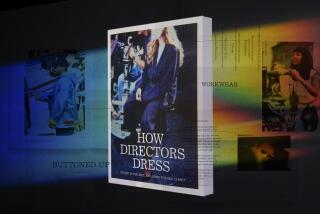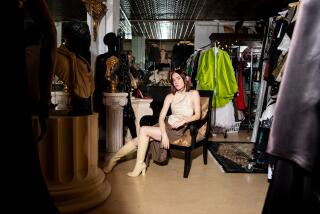Afghan Leader’s Wardrobe Honors a Diverse Nation
- Share via
Afghan’s interim leader Hamid Karzai is getting as much coverage for his colorful robe and lambskin cap as for his diplomacy. But as is so often the case in fashion, the clothes have a deeper meaning. Each piece of his outfit represents a different region of Karzai’s long-splintered country.
The hand-woven silk robe, or chapan, is typical of those worn by Uzbek and Turkman tribesman in the north. Karzai has been seen wearing a green or purple one. The baggy cotton trousers (peran) and long tunic (tunban) are from the southern regions of Afghanistan. And the lambskin hat, a karakul, is characteristic of urban Kabul.
“He has created this costume for himself representing different parts of the country because he has been charged with unifying various ethnic people in Afghanistan,” said Noor Delawari, a banker who came to the U.S. 33 years ago and lives in La Canada but is planning to move back to Afghanistan to set up a bank.
Mohammed Daoud, a United Airlines pilot from Malibu who has been traveling with the interim leader for the past couple of weeks, said Karzai, 44, is amused by the attention to his wardrobe. In Tokyo, Daoud showed Karzai a newspaper story featuring his photo, next to one of a Gucci model wearing a cape similar to a chapan. “Maybe we should call it the Karzai look,” Daoud suggested.
People have always been fascinated by the way heads of state dress, from Communist Chinese leader Mao Tse-tung to Jawaharlal Nehru. When Junichiro Koizumi became Japan’s prime minister last year, his permed salt ‘n’ pepper hair catapulted him to rock star status.
Karzai is showing his people “he is not prejudiced; he is proud to wear the clothes of a different ethnicity,” according to Hasan Nouri, president of engineering consulting firm Rivertech Inc. in Laguna Hills and founder of International Orphan Care, a nonprofit which provides assistance to Afghan orphans.
People have taken notice. “He has a sense of himself as a visual entity in the world,” said Anne Hollander, a fashion historian and author in New York.
The pieces Karzai wears are common in Afghanistan, according to Delawari. “You go to Mazar-i-Sharif and every man is dressed the same way.” But Karzai, who speaks flawless English, would probably wear Western clothing if he were not a head of state, he said.
Karzai’s family is prominent in the Popolzai clan, part of the Durrani tribe that has been linked to Afghanistan’s royal dynasty since the 1700s. He is also a Pushtun, the dominant ethnic group of the country and the ousted Taliban.
Besides promoting unity, his diverse costume may be a way to deflect criticism. “He’s already been labeled as one who was installed by Western powers, [so] wearing Western clothing would only substantiate that propaganda,” Nouri said.
But even as Karzai is being called the “chic-est man on earth” by Gucci creative director Tom Ford, not everyone in the Afghan American community agrees. For some, tribal dress is a reminder of a divisive time.
Before the Taliban, during the previous government, officials never appeared in public wearing native clothing, according to Sayed T. Hashemeyan, a former professor at Kabul University who fled Afghanistan for the U.S. in 1982. All government employees wore Western dress. Only after 1992, when the moujahedeen took over the country, did people begin wearing tribal dress again.
“I’ve not seen the Afghan leaders appear in public in any other way than Western dress, and I think we should go ahead with that,” said Hashemeyan, who lives in Montclair, where he publishes the bimonthly magazine Afghan Mirror. “Afghans in general prefer modernity, and they would like their country to turn into a modern country.”
Historically, political leaders have had to wear Western dress to be respected on the world stage, said Patricia Anawalt, director of the Center for the Study of Regional Dress at UCLA’s Fowler Museum of Cultural History. But that has changed, particularly in the Muslim world, she said. “There is a new respect for national costume.”
Although Daoud said there are more important things to focus on in Afghanistan, he said he would not mind if Karzai started a few trends. “I would welcome it,”’ he said. “It would prove that the Western world is open to others. We’ve been adopting Western fashions all these years, it’s about time they take from us.” And, he added, “Hopefully that will translate into importing handicrafts.”’
More to Read
Sign up for Essential California
The most important California stories and recommendations in your inbox every morning.
You may occasionally receive promotional content from the Los Angeles Times.














